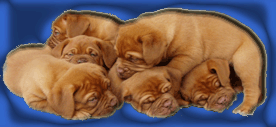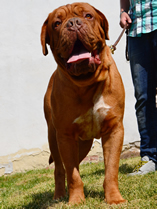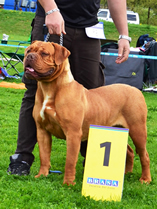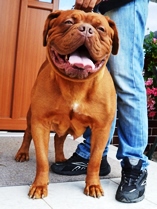
 Simone Bordo
Simone Bordo
Kennel
Dogue de Bordeaux
| Welcome | |
Simona & Petr Malek Lazany 124 679 22 Lipuvka (15 km by Brno) Czech Republic E-mail : simonebordo@doguedebordeaux.cz Mobil : +420 604 805 454 GPS : 49°21'16.888"N , 16°33'6.227"E |
|
|---|---|
|
|
STANDARD DOGUE DE BORDEAUX Brief Historical Summary: The Dogue de Bordeaux is one of the most ancient French breeds, probably a descendant of the Alans and, in particular, the alan vautre of which Gaston PHEBUS (or FEBUS), Count of Foix, said in the 14th century, in his Livre de Chasse that " he holds his bite stronger than three sight-hounds ". The word " dogue " first appeared at the end of the 14th century. In the middle of the 19th century these ancient dogues were hardly renowned outside the region of Aquitaine. They were used for hunting large animals such as boar, for fighting (often codified), for the guarding of houses and cattle and in the service of butchers. In 1863 the first French dog show took place in Paris in the Jardin d'Acclimatation. The Dogues de Bordeaux were entered under their present name. There have been different types : the Toulouse type, the Paris type and the Bordeaux type, which is the origin of today's dogue. The breed, which had suffered greatly during the two world wars, to the point of being threatened with extinction after the second world war, got off to a fresh start in the 60's. General Appearance: Typical concave lined brachycephalic molossoid. The Dogue de Bordeaux is a very powerful dog, with a very muscular body yet retaining a harmonious general outline. He is built rather close to the ground, the distance sternum-ground being slightly less than the depth of the chest. Stocky, athletic, imposing, he has a very dissua-sive aspect. |
Update : 27.11.2017 Number access : |
||
|
|
||









